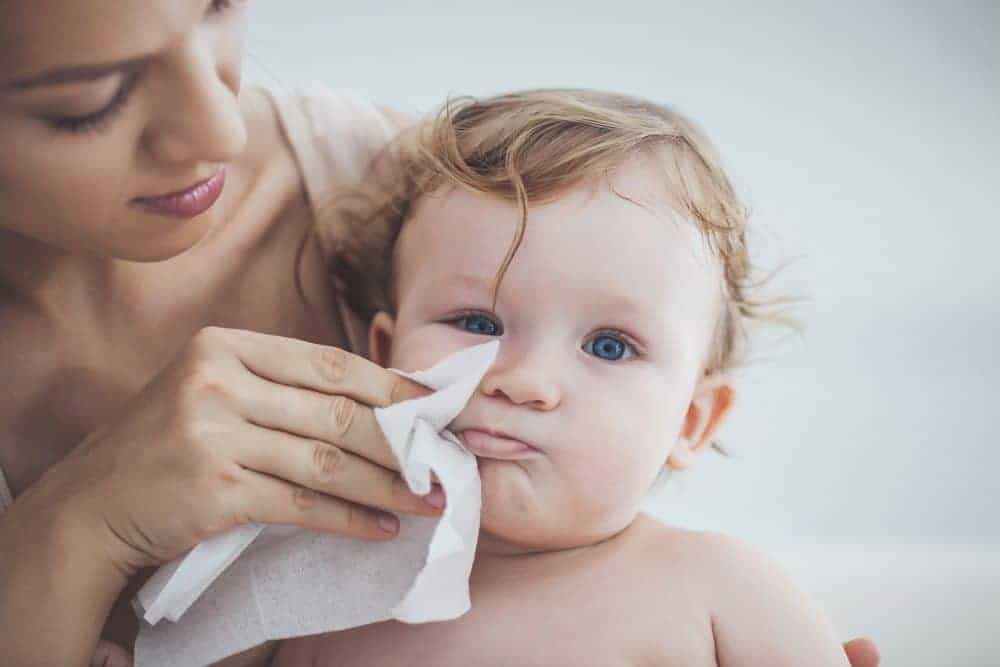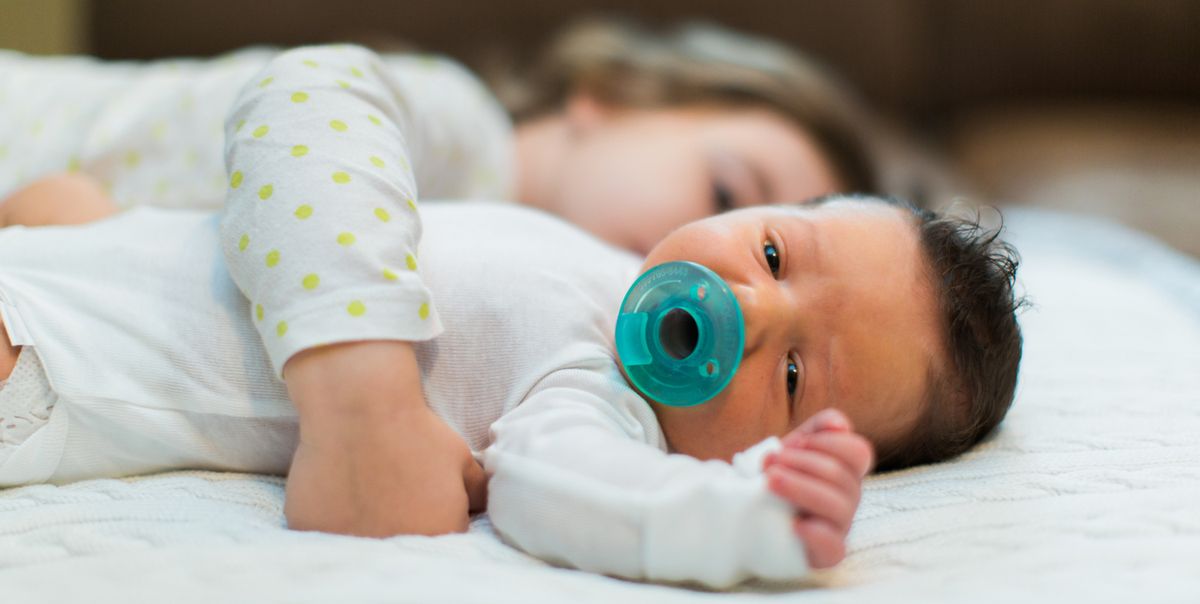If you're like most parents, you've probably gone through your fair share of pacifier wipes. You know, the little things that you use to clean your baby's pacifier when they drop it on the floor (or worse). But which ones are the best? Which ones will get the job done without leaving your baby's face red and irritated?
Here we've put together a list of the best pacifier wipes on the market. We've considered factors like price, effectiveness, and safety in order to come up with a list that we think is definitive.
4 best pacifier wipes
Dapple Naturally Clean Pacifiers
This brand is one of the most popular when it comes to pacifier wipes. They offer a 3-pack of 70-count wipes for around $10. The ingredients are all-natural and organic, so you can feel good about using them on your baby's face. They're also alcohol-free, which is important because you don't want to irritate your baby's skin.
If your diaper bag is already bursting at the seams, don't worry. There's no need to carry a second set of wipes (in addition to your baby wipes). They take up very little room and are ideal for going light. Alcohol-free, chemical-free, and, most importantly, non-toxic. And it's really easy to use.
What we like:
- The price is great for a 3-pack of wipes
- They're all-natural and organic
- They're alcohol-free
What we don't like:
- Some parents find that they're not as effective as other brands
Mam Pacifier Wipes
If you're a penny-pincher who wants to split expenses down by category, the MAM pacifier wipes are the best value for money. They cost the same as my top pick, which comes in a package of 40. They aren't individually packaged, but they're still a great deal.
The MAM wipes are also alcohol-free and hypoallergenic. They're free of fragrances, parabens, and sulfates. So you can use them on your baby's face without worrying about irritation. And they're small enough to fit in your diaper bag without taking up too much space.
What we like:
- They're a great value for money
- They're alcohol-free and hypoallergenic
- They're free of fragrances, parabens, and sulfates
What we don't like:
- They are not individually packed
Nuk Individually Wrapped Pacifier Wipes

Nuk's wipes are the only ones that are divided into individual pieces. And this is a feature that we adore. Nuk, on the other hand, was beat by our top selection, which not only has individually wrapped wipes but is also biodegradable.
If your baby is constantly dropping their pacifier, you know the importance of having a reliable and easy-to-use wipe. Nuk's individually wrapped wipes make it easy to keep your baby's pacifier clean and free of germs.
The only downside to these wipes is that they are not as thick or sturdy as some of the other options on our list. But, they get the job done and are a great value for the price.
Pros:
- Individually wrapped
- Easy to use
- Affordable
Cons:
- Not as thick or sturdy as some other options
Munchkin Arm and Hammer Pacifier Wipes
Munchkin products are always top quality, and their pacifier wipes are no different. Made with Arm and Hammer baking soda, these wipes are ideal for cleaning a baby's pacifier on the go. They're also great for teething rings, countertops, and even your own hands!
Surprised to learn that one of the primary components, polysorbate 20, is treated with ethylene oxide, which poses a risk of 1,4-dioxine contamination - a hazardous byproduct and known animal carcinogen. Sure, the probability of contamination may be low, but when other pacifier wipes do not include this potentially harmful component, why take the chance?
Pros:
- Top quality
- Ideal for cleaning a baby's pacifier on the go
- Great for teething rings, countertops, and even your own hands
Cons:
- May be contaminated with 1,4-dioxine, a hazardous byproduct and known animal carcinogen
What germs could be found on a baby`s pacifier?
A pacifier could have all sorts of germs on it, from the drool of the baby to the food they`ve eaten. So how do you clean a pacifier and make sure your baby isn`t exposed to any nasties? Here are some tips:
- Wash your hands before handling the pacifier. This will help to stop the spread of germs.
- Use a clean, damp cloth to wipe down the pacifier. Gentle antibacterial wipes can also be used.
- If the pacifier is very dirty, you can wash it in warm soapy water. Rinse well and allow it to air dry.
- Never share pacifiers with other babies as this can spread germs.
The issue is that when your newborn baby starts to drool, they tend to get a little bit of everything on their pacifier. So, it`s important to clean a pacifier often - at least once a day, and more if possible. Wiping it down with a clean, damp cloth is usually enough. If it`s particularly dirty, you can wash it in warm soapy water and rinse it well before allowing it to air dry.
Just remember to wash your own hands before handling the pacifier, and never share them with other babies!
Why do pacifiers get cloudy?
All of our pacifier nipples come with a valve, allowing air to escape as the baby clamps down on the nipple. This ventilation system expels air from inside the nipple out through the valve, causing it to naturally flatten after the infant's oral cavity.
This is the same reason why our pacifiers do not collapse like other brands. The nipple does not need to "recover" after each use since air is continuously escaping through the valve. When your pacifier is cloudy, your baby is not getting as much air, and it may be time to replace the nipple.
What do you clean pacifiers with?
With a clean conscience! Just kidding. You can actually clean pacifiers with hot water and soap, or put them in the dishwasher. But however you choose to clean them, always make sure they're dry before giving them back to your little one.
Although cleaning a pacifier does not have to be difficult, it does need some effort. You don't have to worry about boiling them or using sanitizing solutions. A simple soaks-up with hot water and dish soap should enough. You can also put them in the dishwasher on the top rack. Make sure to rinse the pacifier well and remove any suds before giving it back to your baby. You don't want your little one to have a soapy mouth.

If you're out and about, you can clean the pacifier with water from a bottle or a sink. Just make sure the water is clean, and that you rinse the pacifier thoroughly before giving it back to your baby. Cleaning a pacifier should be part of your regular routine, but don't worry if it's not perfect. A little bit of saliva won't hurt anyone!
How often should you clean a pacifier?
It's important to clean pacifiers often, especially if they fall on the ground. A good rule of thumb is to clean them before each use. You should also deep clean them regularly. This means taking them apart and washing all the parts with hot water and soap. Deep cleaning pacifiers will help remove any built-up bacteria.
The dirtier the pacifier, the more often you should clean it. If it falls on the ground, make sure to give it a good rinse before giving it back to your baby. You should also replace any cracked or damaged pacifiers.
Cleaning a pacifier is important, but don't go overboard. A little bit of saliva won't hurt anyone! Just make sure to clean them regularly and replace any damaged or cracked pacifiers. Cleaning a pacifier is an important part of keeping your baby healthy. It only takes a few minutes, and it can prevent a lot of problems down the road. So make sure to add it to your regular routine!
What about sanitizing?
Pacifiers can be sanitized in several ways. You can boil them, put them in the dishwasher, or use a UV sanitizer.
Boiling is the most effective way to sanitize a pacifier. Put the pacifier in a pot of boiling water for 5 minutes. Remove it with tongs and let it cool before giving it to your baby. You can also sanitize pacifiers in the dishwasher. Just make sure to put them on the top rack, away from any dirty dishes.
UV sanitizers are becoming more popular because they're quick and easy to use. Just put the pacifier in the sanitizer and wait for the light to turn off. This usually takes around 30 seconds. Sanitizing pacifiers is a good way to kill any bacteria that might be on them. But you don't need to do it every time you clean them. Just sanitize them regularly, and you'll be fine.
Do you need to boil new pacifiers?
Before using your first pair of pacifiers, make sure they're clean. To sterilize a pacifier, boil it in a pot with enough water for 5 minutes or soak it in a solution of water and sterilize the solution. You can also put it in the dishwasher on the top rack. Just make sure to rinse it well and remove any suds before giving it back to your baby.
You should also replace any cracked or damaged pacifiers. Cleaning and sterilizing pacifiers are important but don't go overboard. A little bit of saliva won't hurt anyone! Just make sure to clean them regularly and replace any damaged or cracked pacifiers.
Do you have to change the pacifier size?
When to replace your baby's pacifier might be a tough call. In fact, some parents aren't even aware that they need to exchange their child's pacifier! If you examine the packaging of your baby's pacifiers, however, you'll see that there is a size - usually 0-3 months, 0-6 months, 6-18 months, and so on.
The American Academy of Pediatrics recommends that you replace your baby's pacifier every two to three months. This is because the shield, or the part that goes in your baby's mouth, can start to wear down and become a choking hazard. The nipple can also become worn down and torn, which can cause irritation and soreness in your baby's mouth.
If you notice that your baby's pacifier is starting to show signs of wear, it's time to replace it. You should also be on the lookout for any cracks or tears in the nipple. If you see any, it's time for a new pacifier. When choosing a new pacifier, make sure to pick one that is the right size for your baby. You should also make sure that the shield is big enough to cover your baby's entire mouth. If you're not sure what size to get, ask your pediatrician or a staff member at your local baby store.
Bottom line
Cleaning and replacing your baby's pacifier is an important part of keeping them healthy. Make sure to add it to your regular routine, and you'll be doing your part to keep your little one safe and healthy. Thanks for reading!